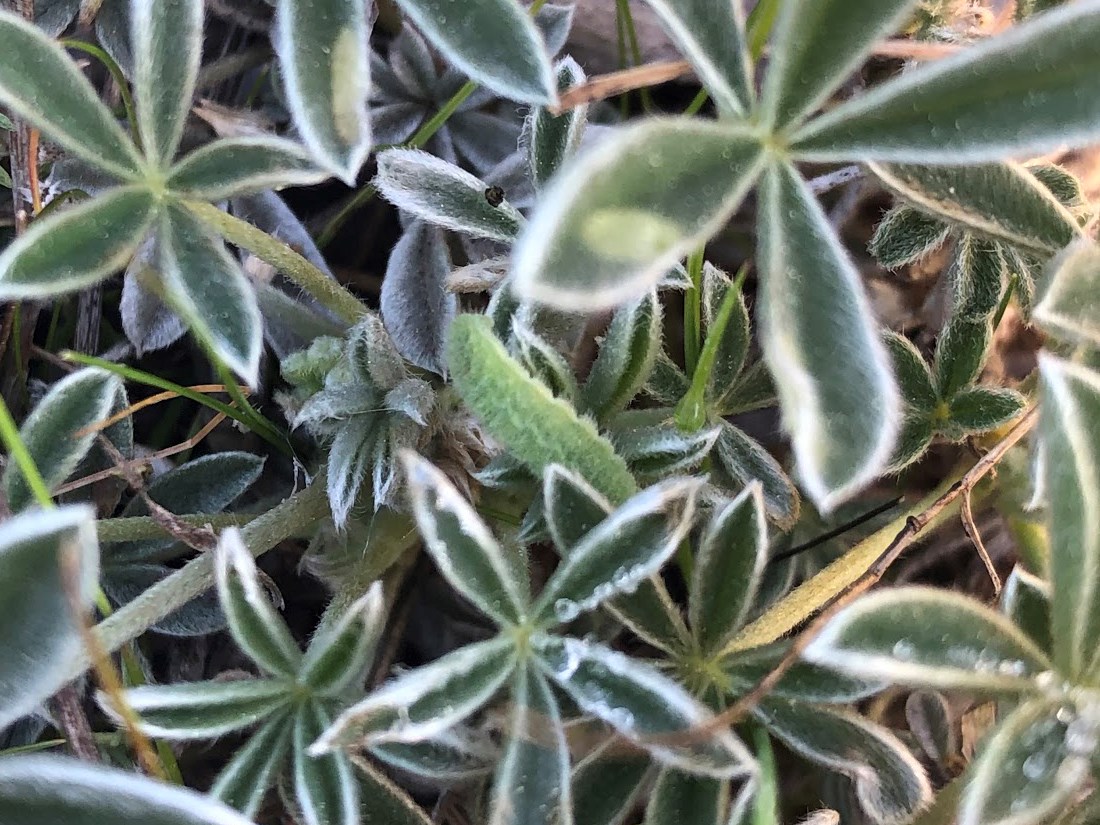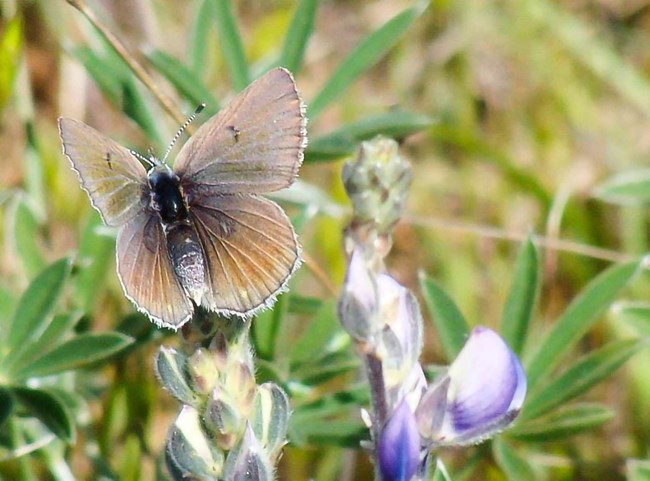Last updated: April 7, 2021
Article
Celebrating Signs of Resilience in Mission Blue Butterfly Populations

NPS / Bill Merkle
March 2021 - With the Mission blue butterfly flight season just about here, monitoring for their larvae at Milagra Ridge in Golden Gate National Recreation Area has already yielded hopeful results. From 2017 through 2020, Milagra Ridge was the site of an ambitious translocation project to boost it’s declining population. Last year, Mission blues were translocated for the first time into a previously unoccupied habitat painstakingly restored by the Golden Gate National Parks Conservancy’s Park Stewardship Program. So far, the translocation seems to have stuck! Biologists found four larvae there in late February/early March. In the meantime, biologists have also finished analyzing their adult Mission blue monitoring results from the 2020 flight seasons at both Milagra Ridge and Oakwood Valley. They were excited to find signs of resilience in those data as well.

GGNPC
At Milagra Ridge, although relative abundance of the endangered, quarter-sized blue butterflies dropped from 2019, it was still up from when translocations began. Eight were seen on transects and another eight were seen off transects. In addition, biologists found Mission blues at six transects in 2020, up from just one when translocations began. This is great news for the resiliency of the larger population. If the butterflies at one transect have a really bad year, it is helpful to have others nearby that can help repopulate it down the road. The fungal pathogen that has severely affected the butterfly’s lupine host plants and been a primary culprit in Milagra’s Mission blue decline has now been found at all of the area’s monitoring sites. But last year, the lupines and butterflies got a bit of a respite, with the pathogen only causing symptoms in 5% of affected plants.
Compared to Milagra Ridge, the numbers of Mission blues seen in Oakwood Valley in 2020 are ridiculous. Biologists counted 156 butterflies! That is up since last year, though lower than when monitoring first began in Oakwood Valley in 2010. And, in similarly good news related to resilience, the butterflies seen at Oakwood Valley were distributed across every monitored transect, and beyond.
For more information
- Pacific Coast Science & Learning Center: Mission Blue Butterflies
- Golden Gate National Parks Conservancy: Mission Blue Butterfly
- Contact Park Stewardship Program Senior Restoration Manager Christina Crooker or Golden Gate Wildlife Ecologist Bill Merkle
